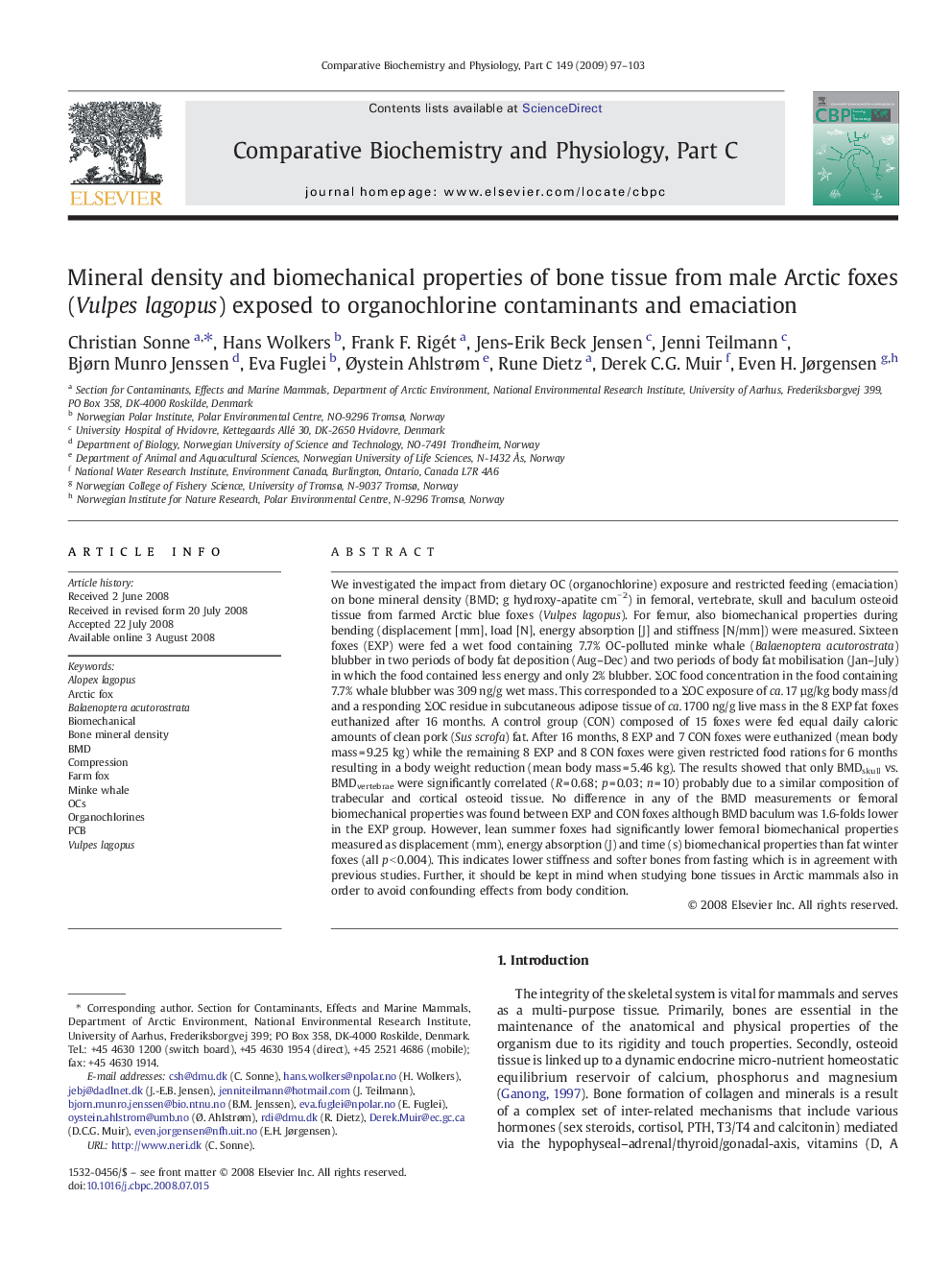| کد مقاله | کد نشریه | سال انتشار | مقاله انگلیسی | نسخه تمام متن |
|---|---|---|---|---|
| 1978277 | 1061535 | 2009 | 7 صفحه PDF | دانلود رایگان |

We investigated the impact from dietary OC (organochlorine) exposure and restricted feeding (emaciation) on bone mineral density (BMD; g hydroxy-apatite cm− 2) in femoral, vertebrate, skull and baculum osteoid tissue from farmed Arctic blue foxes (Vulpes lagopus). For femur, also biomechanical properties during bending (displacement [mm], load [N], energy absorption [J] and stiffness [N/mm]) were measured. Sixteen foxes (EXP) were fed a wet food containing 7.7% OC-polluted minke whale (Balaenoptera acutorostrata) blubber in two periods of body fat deposition (Aug–Dec) and two periods of body fat mobilisation (Jan–July) in which the food contained less energy and only 2% blubber. ΣOC food concentration in the food containing 7.7% whale blubber was 309 ng/g wet mass. This corresponded to a ΣOC exposure of ca. 17 µg/kg body mass/d and a responding ΣOC residue in subcutaneous adipose tissue of ca. 1700 ng/g live mass in the 8 EXP fat foxes euthanized after 16 months. A control group (CON) composed of 15 foxes were fed equal daily caloric amounts of clean pork (Sus scrofa) fat. After 16 months, 8 EXP and 7 CON foxes were euthanized (mean body mass = 9.25 kg) while the remaining 8 EXP and 8 CON foxes were given restricted food rations for 6 months resulting in a body weight reduction (mean body mass = 5.46 kg). The results showed that only BMDskull vs. BMDvertebrae were significantly correlated (R = 0.68; p = 0.03; n = 10) probably due to a similar composition of trabecular and cortical osteoid tissue. No difference in any of the BMD measurements or femoral biomechanical properties was found between EXP and CON foxes although BMD baculum was 1.6-folds lower in the EXP group. However, lean summer foxes had significantly lower femoral biomechanical properties measured as displacement (mm), energy absorption (J) and time (s) biomechanical properties than fat winter foxes (all p < 0.004). This indicates lower stiffness and softer bones from fasting which is in agreement with previous studies. Further, it should be kept in mind when studying bone tissues in Arctic mammals also in order to avoid confounding effects from body condition.
Journal: Comparative Biochemistry and Physiology Part C: Toxicology & Pharmacology - Volume 149, Issue 1, January 2009, Pages 97–103